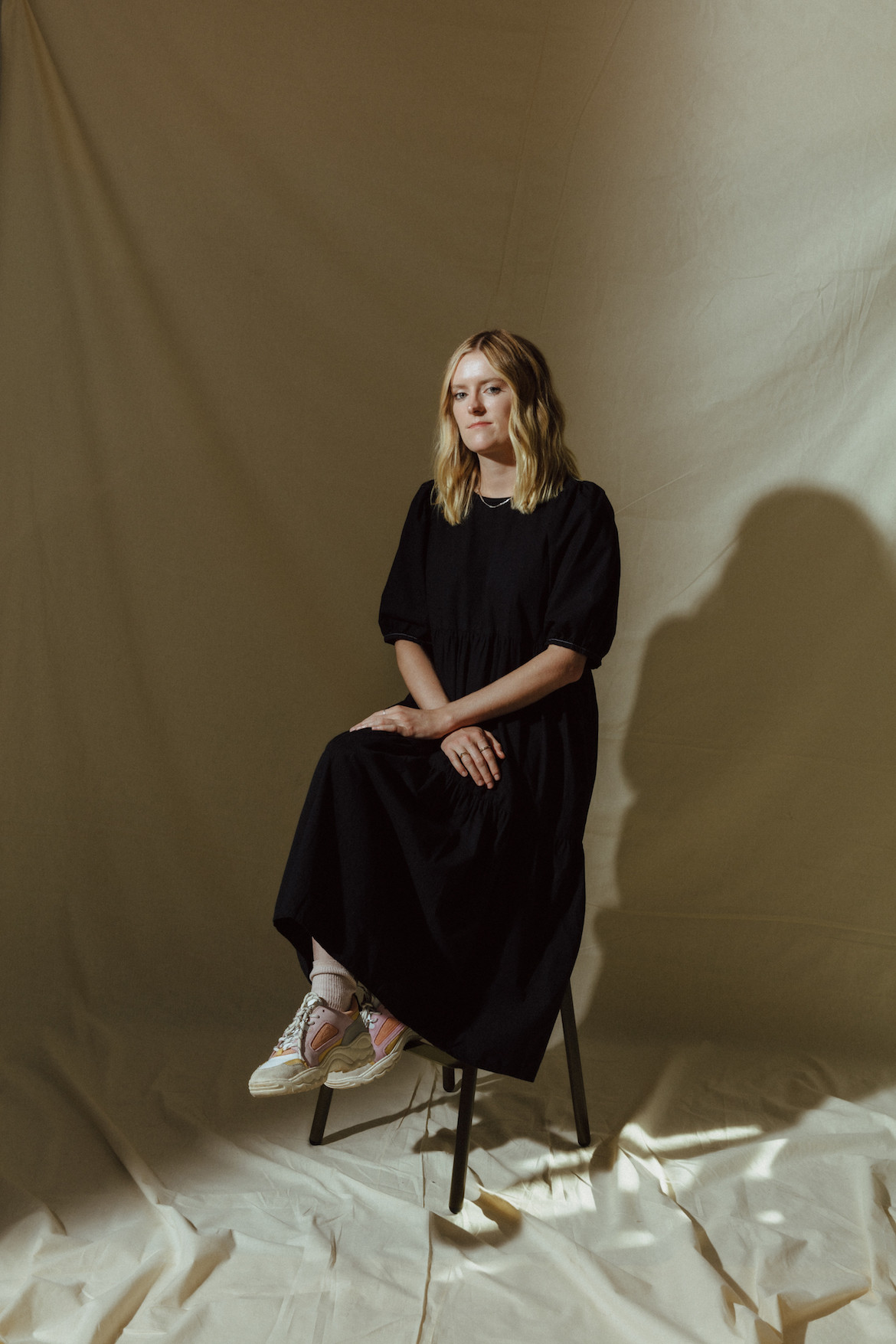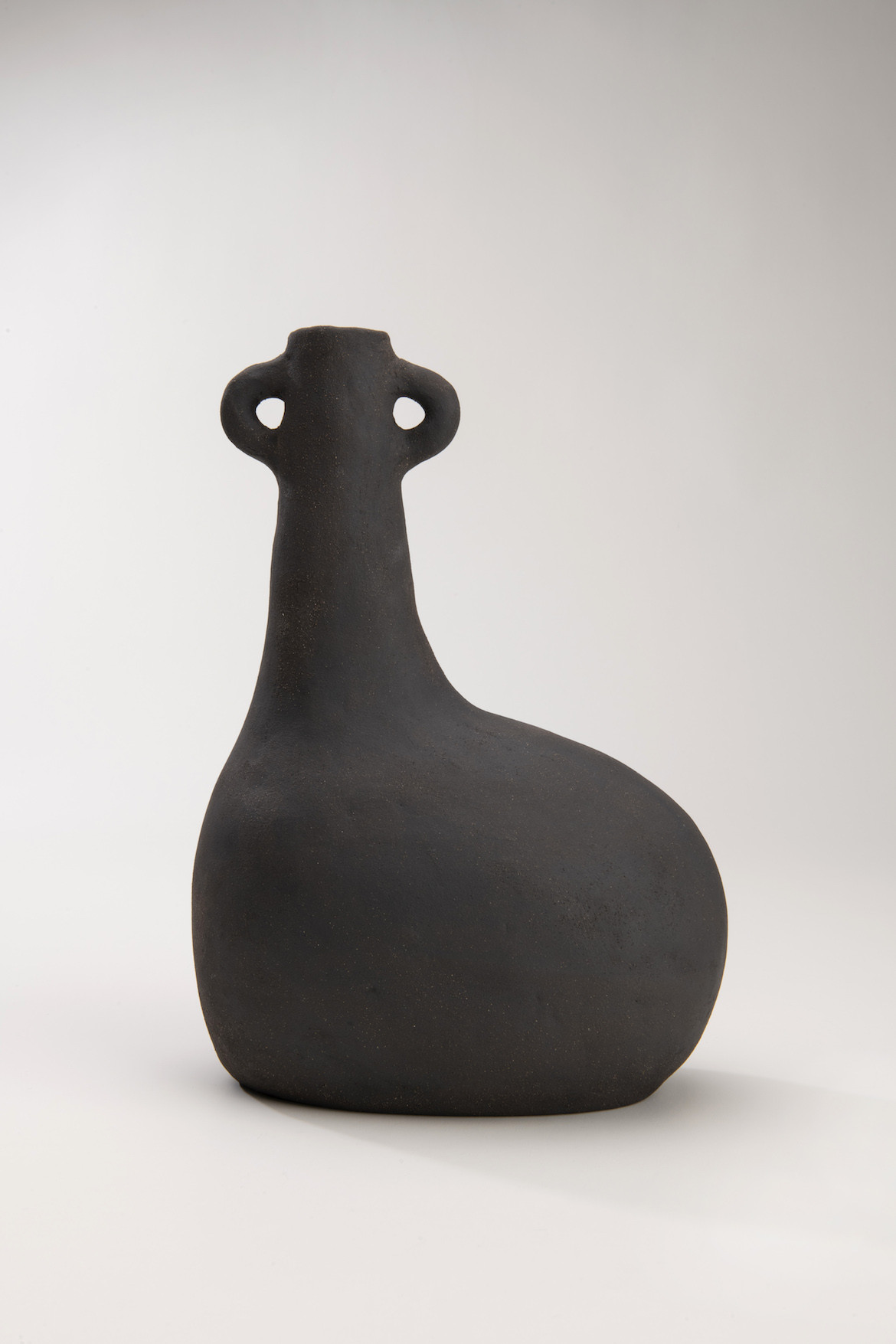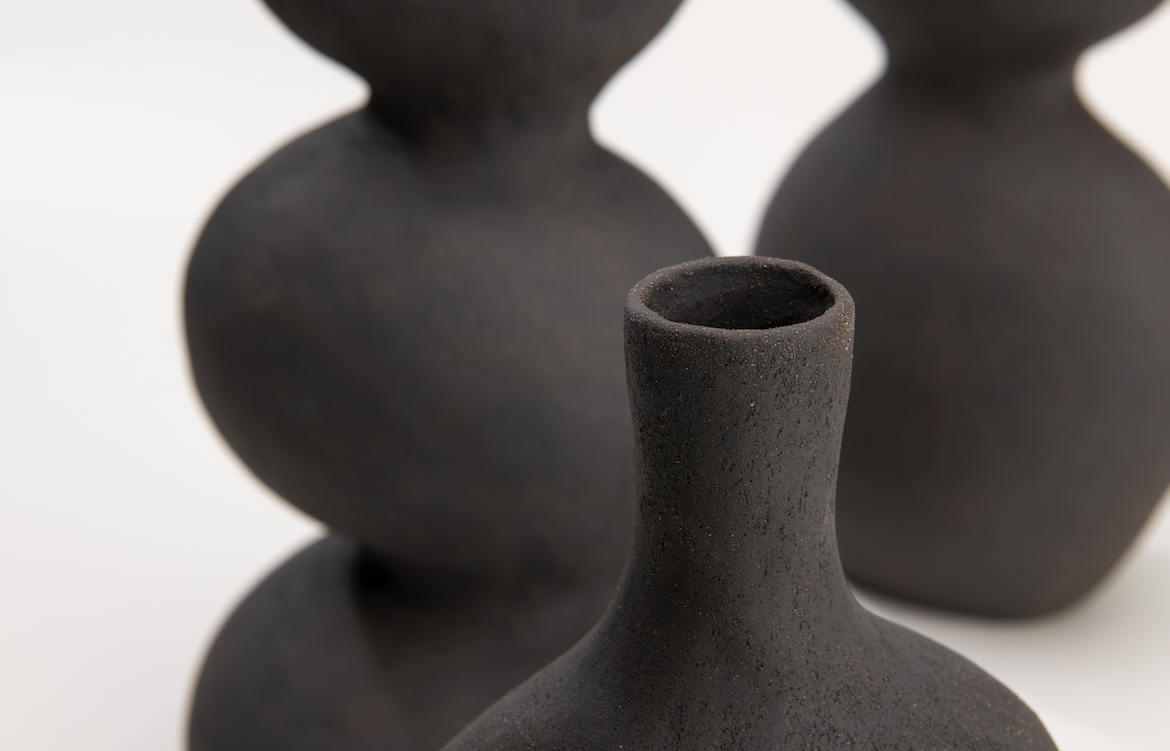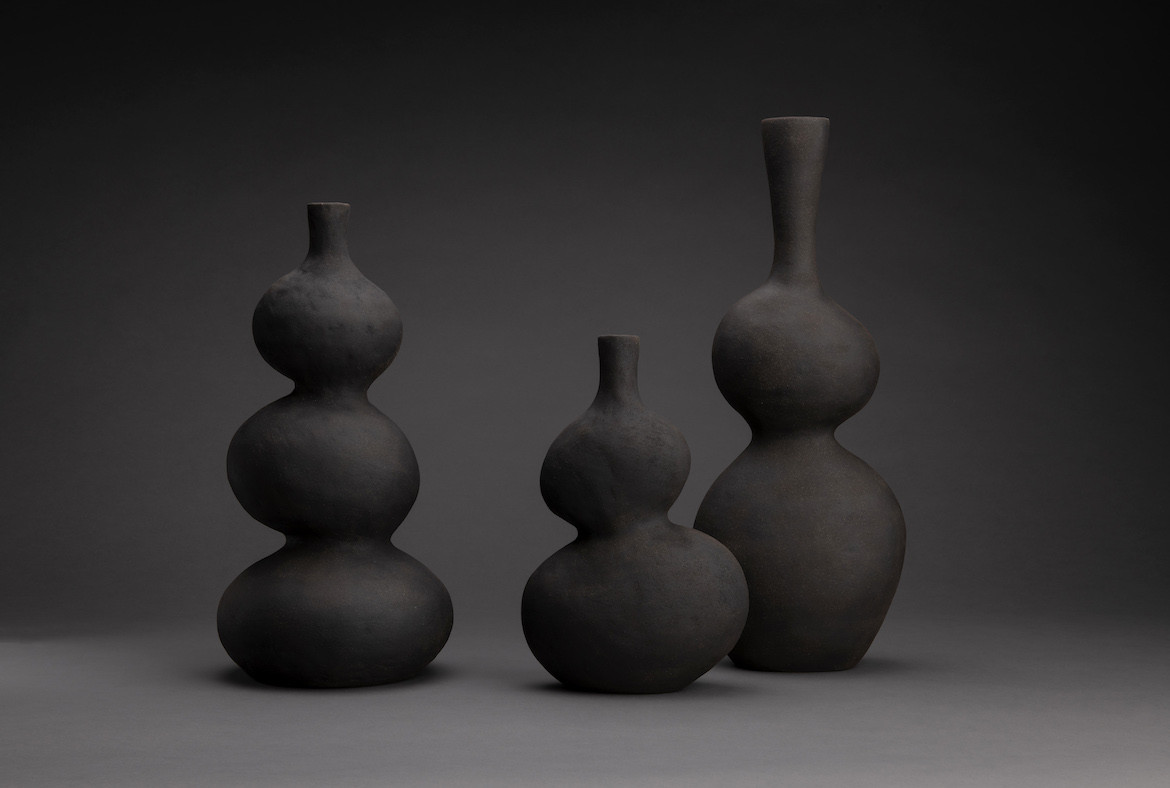Just before Sydney was plunged into lockdown, I flew down to South Australia to meet Eloise White at her ceramic studio in Adelaide’s JamFactory.
Across one wall of her studio space, a towering shelf is covered in curvaceous ceramic forms. I work my way through her incredible collection to look at each piece, before bending down to inspect a small candlestick holder on the bottom shelf. It’s a mesmerising curved object dripping with glaze. “Oh no,” laughs Eloise, “that’s just a test piece!” To her bewilderment, I tell her that even her sample works are beautiful.

Eloise has been a ceramics associate with Jam Factory since early 2020. It’s here that her work has evolved towards a “bulbous”, more organic and biophilic style and away from her earlier interest in engraving.
For Eloise, her process is about mindfulness and the methodical purpose with which she makes. Rather than using a fast-paced pottery wheel, each piece is made by a process of hand building. “I prefer the meditative slowness of hand building,” says Eloise. “It allows a lot more variation and kind of a freedom in the forms you create”. Through its slowness, says Eloise, this technique “facilitates an experience of healing”.

This concept of healing is apparent across her body of work. Currently, Eloise is working on a series called The 5 Stages of Grief, calling on what she’s learnt during a year of personal trials and tribulations to create an array of sculptural, asymmetric forms. The vessels will be displayed in HOME:MADE, an exhibition that is part of the upcoming Design Canberra Festival.
Eloise’s work has also been strongly influenced by her residencies around the globe. In 2019, Eloise undertook a residency at The Pottery Workshop, in Jingdezhen, known as China’s porcelain capital because of its rich history of producing some of the world’s finest porcelain over the last 1,000 years. “Even just walking down the streets was incredible and so beautiful. There were thousands of pots stacked on top of each other on the side of the roads and different suburbs were dedicated to glazing or clay,” says Eloise.

It was here that Eloise created her most significant amount of work yet and began to experiment with a catalogue of different glazes, including a mother of pearl glaze that is unique to Jingdezhen and created by firing a gold lacquer at 200 degrees Celsius for 6 hours.
One year prior, she undertook another residency at Shiro Oni Studio in Fujioka, Japan. “During my residency in Japan there was a really intense heatwave,” says Eloise. “In the middle of the day, when it was too hot to be making in our studios, we would always be down by the river swimming and surrounded by beautiful river stones.” These stones are reflected in Eloise’s recent curvaceous forms, resembling tilted and undulating piles of rocks. “My practice of working with clay, a material formed from stone, is my own ritual of meditative rock balancing,” says Eloise.

During these residencies, Eloise met a range of artists who have inspired her and taught her new techniques, something that has been invaluable as a self-taught ceramicist. In Japan, Eloise met another artist who was an associate at JamFactory at the time. After learning more about Jam, a program that is “unlike any other in Australia,” Eloise decided to apply.
JamFactory, says Eloise, is a building full of glass blowers, furniture makers, metal workers and “some of Australia’s most promising up and coming artists and designers”. The nature of this environment makes cross-discipline collaborations uniquely abundant.

At the moment, Eloise is collaborating with two other JamFactory associates, glass artist Alex Hirst and jeweller Daria Fox. The collaboration will appear at Collide + Divide, a discipline-bending object based body of work made by eleven emerging JamFactory associates, at Craft ACT: Craft + Design Centre.
Currently, her work is on display along with other ceramic practitioners that are affiliated with the JamFactory Ceramic studio at Common Elements, part of Adelaide’s SALA Festival. Recently, she’s also been part of an online exhibition with Sydney’s May Space Gallery, and collaborated with esteemed Australian painter Noel McKenna on a collection for CERAMIX at the Manly Art Gallery & Museum.
Did you enjoy this story? You might also like The Secret Life of Clay.

